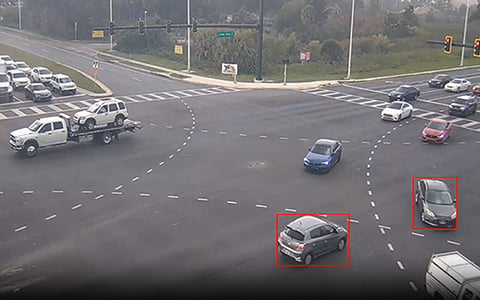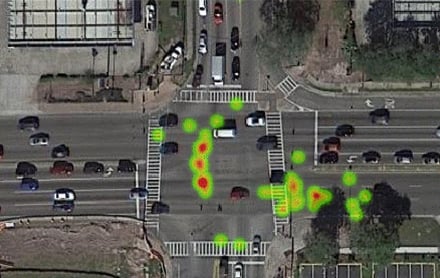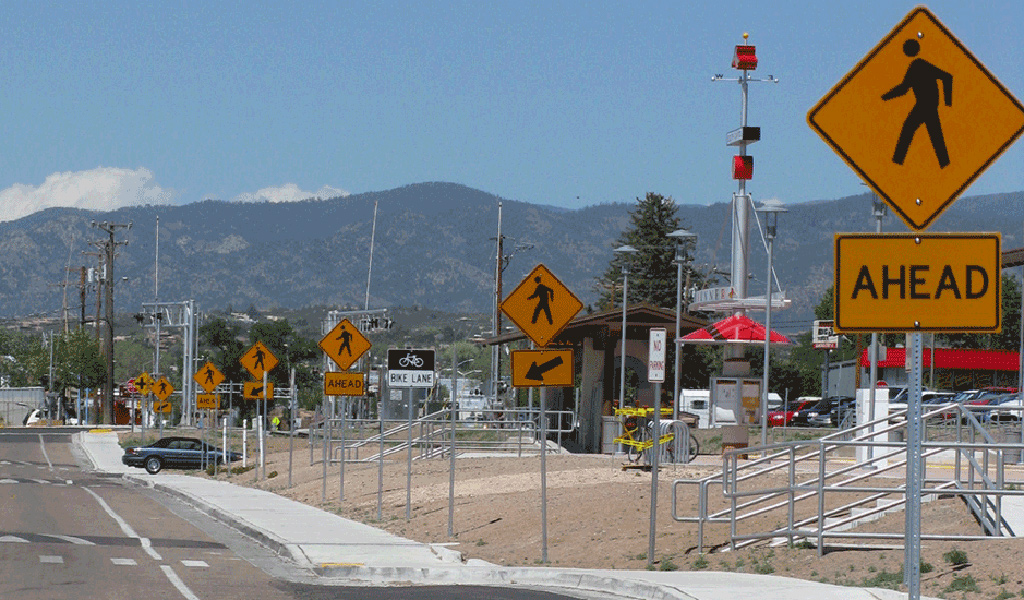
More and more, people are using artificial intelligence (AI) to enhance and automate tasks at work or home. In Florida, VHB is part of an international team selected by the Osceola County Board of County Commissioners to utilize video analytics and AI technologies to drastically improve intersection safety. The technology-enabled program provides the County and Florida Department of Transportation (FDOT) with the information they need to be proactive about safety. The benefits of these tools are not only saving dollars but saving lives.
The project is funded by a $500,000 Florida DOT Local Agency Program (LAP) grant that helps pilot technology deployment to enhance mobility and safety on Florida’s highest-fatality roadways. Osceola County is part of the busy Central Florida amusement park tourist corridor lined with restaurants, hotels, and entertainment, a prime location to pilot technology that can save lives at busy intersections.
Leveraging technology to achieve a safer transportation system
County leaders envision a congestion- and fatality-free transportation system that improves the mobility of people and goods, enhances economic prosperity, and preserves the quality of the environment throughout the County. VHB is helping demonstrate how decision-makers can leverage data-driven metrics to align the County’s identified priorities with the future vision of upgrading infrastructure and transportation networks.
VHB is partnered with Derq, a Dubai and Detroit-based, MIT spin-off provider of real-time AI analytics solutions for connected roads and vehicles. They provide a state-of-the-art, proprietary video analytics system that captures and analyzes video data from traffic cameras installed at major intersections to identify near-miss incidents. The goal is to diagnose safety issues and implement strategies like education and enforcement to prevent or mitigate serious crashes using AI algorithms.
Diagnosing crash patterns and underlying safety issues before selecting countermeasures is critical
The team targeted intersections based on the presence of existing cameras, history of safety issues, and diversity of sites.
“Typically to study an intersection, you would need years of reported crash data to detect any patterns or issues that could be remedied. But near misses almost universally go un-reported,” said Frank Gross, PhD, PE, Safety Practice Leader. “An intersection could have 10 near misses a day from the same deficiency and we would never know. Our approach is based on near-miss and other relevant performance measures from just days or weeks of video data. The system identifies those near misses and creates small video clips for the team to review.”

The technology will hopefully allow for intersection modifications before a serious incident occurs. The intersection modifications could include infrastructure improvements such as better striping, signage, signal timing, and visibility to improve safety. Intersection modifications could also address behavioral issues through education and enforcement. And it’s not only useful for vehicular incidents but also identifies near misses with active road users like pedestrians, cyclists, and scooters, as well.
This is a pilot program, but the technology has other exciting applications such as with connected vehicles to broadcast warnings of pedestrian activities, detect and alert wrong-way drivers, adjust signal timing to slow traffic or accommodate detoured traffic, and conduct car/pedestrian counts.
Learn more about VHB technology solutions and reach out to Frank directly via email or LinkedIn.

